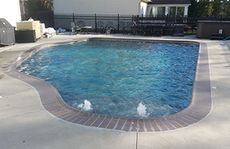Toledo Pool Services | Call Us Today: 419-874-1900
Pool Care Basics
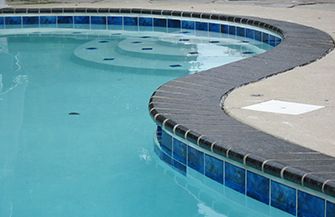
Have you recently had a pool installed, or bought a house with a swimming pool, and you find yourself thinking that you feel completely overwhelmed with where to start?
Caring for and maintaining a new swimming pool can certainly be intimidating to people unfamiliar with this process. The good news is that while there is a steep learning curve to swimming pool ownership, once you get some of the basics under control you will find that it is a fairly easy process after all.
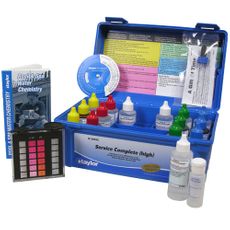
Check Water Chemistry
We encourage you to check your water weekly with a home test kit and and checked at least once a month by a professional.
It's easy to maintain a pool that has it's chemistry in balance.
Levels to check
- Free and Total Chlorine
- Cyanuric Acid
- Calcium harness levels (especially gunite pools)
- pH
Your local pool supply store can assist you in getting your pool levels in line or you can call us and we can service your pool.
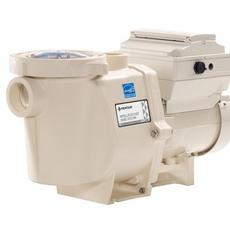
Pool Pump
Run your pool pump 8-10 hours a day during the season. If temperature is above 88 degrees, you should run the pump 10-11 hours for the best pool care.
You should clean out the skimmer every other day when there is a lot of debris in the air.
If you think your pump is not working properly, give us a call and we'll check it out.
We install: Pentair IntelliFlo2 Variable Speed pool pump
Pool Pump Replacement Effective July 2021, a new mandate will require that all pool and/or spa filtration pumps meet certain energy-efficient standards. At the moment those requirements are only met by variable-speed pumps. These regulations are the result of collaboration between manufacturers, utility companies, energy-efficiency advocates and the U.S. Department of Energy.
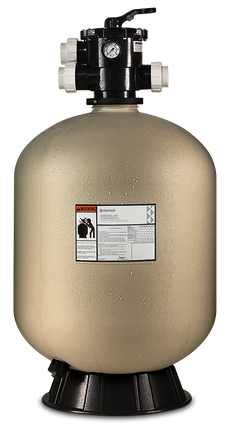
Swimming Pool Filters
There are two types of pool filters.
Sand:
Cartridge: Clean out at least XX
We install: Pentair sand filter
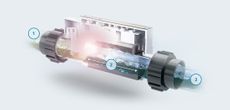
Pool Salt Chlorine Generators
How it works?
1) Water and dissolved salt flow through the generator cell.
2) Through electrolysis it is converted into chlorine.
3) Chlorinated water is returned to the pool. Once the chlorine has finished purifying the pool of contaminants, it reverts back into salt and the cycle repeats.
How much salt do I add?
Check your owner’s manual or start-up guide for the manufacturer’s recommendation on salt level range, which can vary by pool salt system. You will also need to know your pool capacity, or size in gallons, to add the correct amount of salt. Typically, the salt level required to maintain a safe, chlorinated pool is about 2700 to 3500 PPM (parts per million).
Adding 8 lbs of Pool Salt will raise salt levels 100 ppm, per 10,000 gallons of pool water. Likewise, 80 lbs. of pool salt (two 40 lb bags of pool salt) will raise salt levels by 1000 ppm, per 10,000 gallons. For example, a pool of 20,000 gallons would need twelve (12) 40 lb. bags of pool salt to reach 3000 ppm
Where do I add the salt?
When adding salt, brush it around until it is dissolved. This is accelerated by turning your pump on, opening the bottom drain and pouring the salt over the drain, rather than walking around the perimeter while adding the salt. It is recommended that you continue to run the pump for 24 hours so the salt can spread evenly throughout the pool. Keep your generator off until the salt is dissolved.
How often will I need to add salt?
After the initial dosage of salt, you will only need to add salt when it drops below the recommended minimum. The most common ways salt is lost is through leaks, rainwater overflow, filter back washing, and splash-out/carryout.
Maintenance:
Chlorine generators require very little maintenance. Although many systems are self-cleaning, with a reverse polarity feature that removes scale build-up, the salt cell should still be removed and cleaned on a yearly basis. Most salt system manufacturers recommend cleaning the salt cell by soaking in a mild solution of muriatic acid and water, or use Acid Magic as a safer, low-fume alternative.
How long will the salt cell last?
Most residential salt cells are rated for approximately 10,000 hours of operation. This typically translates to 3 - 5 years, depending on pool volume, cell size and the sanitizer demands of your pool.
We install: Pentair IntelliChlor Salt Chlorine Generator
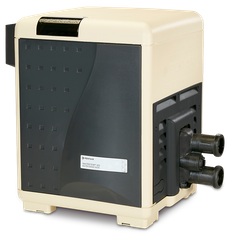
Swimming Pool Heater
We install: Pentair MasterTemp pool heater
Pool Opening
Get the season started off right! There is no better way to kick off your swimming pool season than trusting the experts to do the dirty work. We have fully trained and equipped service technicians ready to tackle your swimming pool opening. The needs of our customers range from simply getting the cover off of the pool and starting the filtration system to completely cleaning the pool and balancing the water chemistry. We are able to establish a plan and pricing to suit your individual need. Our service technicians are able to diagnose any issues that may be present and offer any necessary repair options.
Pool Closing
Arguably the most critical aspect of swimming pool ownership is the proper closing of the pool. If done properly it will provide you with years of hassle free use. Done wrong and it can cause extensive damage and a costly repair bill to any or all components of your swimming pool. Daudelin Pool Services provides you with a thorough closing of your swimming pool giving you peace of mind knowing that you are protected.
Pool Care Frequently Asked Questions
How do I get rid of stubborn algae?
Ideally, you want to prevent algae from ever showing up in your pool in the first place. But we understand, things happen. If algae – be it green, yellow, or black – has taken up residence in your pool, you’ll want to do the following things.
First, brush and vacuum. It’s the difficult, manual labor part of the job, but at this point, it’s necessary. Manual vacuuming bypasses the filter so the algae won’t recirculate. And nothing beats a vigorous scrub of your pool walls to really allow that sanitizer to do its job. Make sure your pump and filter are working properly, and backwash if you think it’s necessary.
Also, if algae has been a persistent visitor, you may want to consider draining the pool and starting all over again. But once again, this is really tricky business, so it’s best to consult a professional at this point. One of our options we can provide is an acid wash and sand filter change to help reduce persistent algae.
How often should I test my pool water?
Like most other parts of this complicated procedure, your answer may vary. Frequency will vary based on things like how often you go swimming, and the air and water temperature. Still, there are some basic rules you can follow to ensure your pool is maintaining proper chemical levels.
On average, you should check your chlorine and pH levels at least two to three times a week. New pool owners should begin by checking levels once a day. This can help give you time to learn your pool as it relates to your climate and swimming habits. Once you learn how your swimming pool works, you should feel comfortable spreading out the time between tests.
Test your calcium hardness once a month.
Do I need to run my pool pump every day?
Ideally, your pool pump would run all day every day. But let’s face it, that kind of energy (and money) spent is just not going to happen. So, let’s talk realistically.
When your pump runs, water is pushed through a filter, cleaned, and sent back into the pool. Any time your pool water spends not circulating is an opportunity for algae and bacteria to grow. Every drop of pool water should pass through your filter every day. If your pump is the right size and the right strength, it should run for eight hours at a time.
And don’t just think about running it every day, think about when you should run it. Do yourself (and your wallet) a favor and schedule your pump to run over night. It uses a lot of energy, so take advantage of your area’s off-peak hours. Your electric bill will thank you.
What do I do if my pool turns green?
A green pool usually means algae. It takes a lot of algae to turn a pool green so if that’s how yours looks, your sanitizer levels are way too low. So, the first thing you need to do is check your levels. Chlorine and Cyanuric levels need to balanced together - After you balance the levels, consider backwashing the filter. Then you’re going to need some elbow grease. Use your pool brush (or an algae brush) to scrub the walls.
Once that’s done, it’s time to shock your pool with highly concentrated chlorine. Your pool might look cloudy after this, but the filter takes care of that as the water runs through it. After that, vacuum the pool, run the pump one more time, and re-check the levels to make sure everything is where it needs to be.
This is a complicated, time-consuming, and expensive process, so the best thing to do if your pool is green is to never let your pool turn green! Stay on top of simple maintenance and upkeep and you should be fine.

